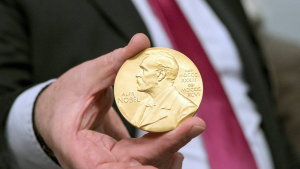The Window Revolution: When Wood Becomes Transparent
Wood you believe it? Scientists turn wood transparent! This innovative material, which maintains the strength of wood while allowing light to pass through, is a breakthrough in materials science. Imagine a world where your windows are made of wood, offering natural warmth and insulation while allowing sunlight to flood your living space.
The journey from solid wood to this remarkable transparent material involves a sophisticated three-step process that combines traditional woodworking with cutting-edge chemistry.

However, it has been fraught with obstacles. Wood’s natural properties—such as its tendency to retain moisture, the presence of various extractives, and its complex internal structure—have made it difficult to uniformly infuse with the polymers and nanomaterials needed to achieve the desired UV-shielding properties.

First, they treat the wood with CO2 in a way that removes moisture and some natural substances from the wood. This opens up the wood’s structure, making it more porous. As a result, liquid can flow through the wood much more easily – about 52% better than before.
With this cleaned and prepped wood as their canvas, scientists then use the supercritical CO2 to help infuse the wood with a special plastic (methyl methacrylate or MMA) and tiny rod-shaped particles of cerium-doped zinc oxide.
 Transparent wood typically retains its wood grain, lending a natural aesthetic. This piece, made by scientists at the University of Maryland College Park, looks like frosted glass but is a better insulator.
Transparent wood typically retains its wood grain, lending a natural aesthetic. This piece, made by scientists at the University of Maryland College Park, looks like frosted glass but is a better insulator.
The plastic, which turns into a substance called PMMA, fills up much more of the wood than traditional methods. In fact, the amount of plastic that gets into the wood jumps from about 35% to 59%.
This new transparent wood can block an astonishing 99.6% of UVA radiation – the highest level achieved in transparent wood to date – while still allowing 83.2% of visible light to pass through.
But the benefits don’t stop there. This marvel of materials science also shows promise in energy savings (potentially reducing heating and cooling costs), sound absorption (for a quieter indoor environment), and even resists fungal growth. It could be used for outdoor furniture, building materials, or any application where wood needs to withstand sun exposure without degrading.

As we continue to push the boundaries of materials science, UV-shielding transparent wood stands as a testament to human ingenuity. By reimagining one of our oldest building materials through the lens of modern technology, scientists have created something truly revolutionary: a window into the future of construction and design.
While this innovation may not immediately replace all glass windows, it represents an important step forward in our quest for better building materials. As the technology continues to develop and production processes are refined, we may find ourselves looking at the world through wood-based windows, protected from harmful UV rays while enjoying the clear view they provide.
Editor: Zhongxiaowen




exploreuaeonline
Usually I do not read article on blogs however I would like to say that this writeup very compelled me to take a look at and do it Your writing style has been amazed me Thank you very nice article
winwavelotto
helloI like your writing very so much proportion we keep up a correspondence extra approximately your post on AOL I need an expert in this space to unravel my problem May be that is you Taking a look forward to see you